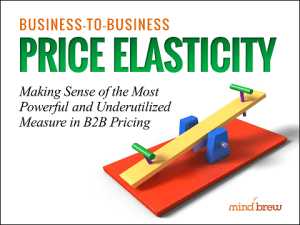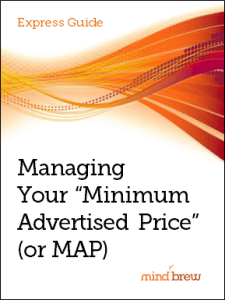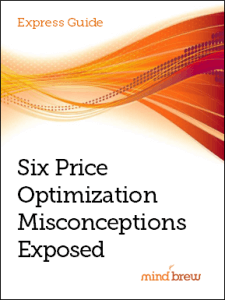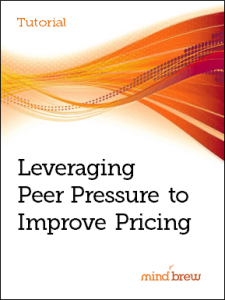Nearly every successful B2B business has at least one person on staff who has his or her finger on the pulse of the market. Often these people have worked in the industry for years, and they may even have been your customers before they came to work for your organization.
These folks often serve as the “go-to” people when your company has questions about customer perspectives or what customers might do in response to certain actions. They are an invaluable resource. Their intuition and experience can provide marketing insights that are hard to get from any other place.
But they shouldn’t be your only guide when it comes to price adjustments.
The most successful B2B pricing practitioners listen to what their internal experts say—and then they do the math to see if those opinions match reality. Specifically, they calculate their price elasticity, a measure of how pricing influences demand for products.
It’s really easy to see elasticity at work in a B2C environment. If a grocery store moves a display of chocolate chip cookies to the front of the store and puts them on sale for half price, it’s going to sell a lot of cookies to people who weren’t really planning on buying them.
It’s a little harder to visualize how elasticity works in B2C environments. After all, General Motors only needs to buy a certain amount of steering wheels, and they aren’t going to buy twice as many just because you run a buy-one-get-one-free sale.
However, B2B pricing does have a very direct impact on sales wins and market share. All else being equal, you’ll win more contracts and increase your market share if your pricing is lower than the competition. In this case, the elasticity formula represents the relationship between the quantity of products you sell and your price. For B2B, the basic elasticity formula looks like this:
Price elasticity= % quantity change ÷ % price change
You can calculate your price elasticity based on your historical data, but it does require some work. You’re also going to have to do some pretty advanced segmentation of your customers because different types of customers will respond to pricing changes very differently.
If you put in the work, you will find that elasticity is a tremendously helpful tool. It allows you to predict with certainty how a price increase or decrease will impact particular customers.
Frequently, B2B organizations are too conservative with their pricing because they are afraid that price increases will scare off too many customers. But with a good elasticity model, you can know exactly how a price change will affect your business. Instead of relying only on Bob the internal expert’s gut feeling, you can forecast sales increases or decreases with certainty. Instead of giving in to fear, you’ll be able to act with confidence, knowing that your company is maximizing sales and profits.
To learn more about calculating elasticity, watch the PricingBrew online training “Business-to-Business Price Elasticity.” You’ll see why we call it “the most powerful and underutilized measure in B2B pricing.”














